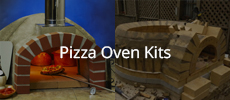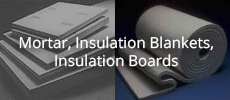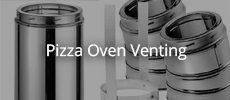Thanks for the tips david s, I'll have a look at the Permatex ultra. Not much progress on the pizza-oven here. Spend most free time last week on Ikea furniture for my daughter... but next to a new bedroom I did manage to almost finish the landing and cut the first stones for the chimney. Cutting the granite, and especially fitting it was quite challenging, but I'm pretty happy with how it came out. I decided to cut away the strange overlapping chimney stones and that looks much nicer. Loadbearing wise I don't think it's significant to loose a little footprint.
I'm still on the fence on the final design on top of the chimney arch: a brick chimney adds a lot of weight fast as well as producing the 'heat in your face' problem that I've been hearing about. I might end up going to make a cast, but let's first focus on getting the arch in. Looking forward to building up again
Announcement
Collapse
No announcement yet.
31"/800mm in Eindhoven, the Netherlands: Design critique and build topic
Collapse
X
-
On pressure on the arch remember that the thermal expansion and contraction cycling can compromise mortar joints so weight on top of the arch becomes more of an issue. This then requires either bracing or buttressing of the side walls that support the arch. The simpler solution most ovens employ is to reduce weight on the arch by using a thin lightweight stainless flue. Care should be taken and solutions found, to accomodate the expansion of the stainless that can stress the refractory or brick that surrounds it, as the conductive stainless expands before the brick or refractory.
On high temperature silicone the best I could find is Permatex Ulta Copper.
on brick sludge it could be used as an alternative for powdered clay because the saw creates such fine dust. However it contains some larger brick chips that would need to be removed as well as the sludge would need to be dried and sieved before ready for use, hardly worth the trouble.
Leave a comment:
-
Thanks Giovanni Rossi that will make it easier. Any answers to my other questions? david s you seem to be the chimney expert?
I decided to brave the heat and get a little bit more work in.... first to improvise an extension to the sawing table such that I could cut the granite windowsill... praying that I would't ruin it on the first cut I managed to get the cut in. Only to find out afterwards that the old 'measure twice, cut once' went up again... I didn't take into account that I should still slice 5cm/2" of width from the granite, so I cut the piece a little bit too large. Luckily it wasn't a problem as the standard window sill was half as cheap as getting the granite cut to size. The standard size leaves me with enough excess for this little mistake. Cutting the sides that will be covered in mortar to size was easily done.
To not risk chipping the front corner I have to flip the 'improvised support' to the other side and that didn't fit into the rest of the night anymore... so hopefully finish cutting the rest of the granite tomorrow evening and have it set in mortar before the weekend.3 Photos
Leave a comment:
-
My granite landing is 3 pieces. I used a bed of standard mortar mix on the brick base. It's held up just fine. Not much heat to worry about there.Originally posted by Toiletman View Post- What kind of mortar do you use for the granite landing? Just normal portland based mortar, or some type of tile glue?
- Likes 1
Leave a comment:
-
With the last few holiday days I managed to put a little bit more work in. The design of my gallery is such that I first need to put the landing in, as it partially rests on it. I bought a black granite window sill that I should be able to cut to size, and have cut a lot of 'standard' bricks to lower height such that they will fit below the granite neatly. It was some puzzling to get neat joint spacing as well as and interlocking buttress and gallery wall.
With the current heat here I had to wait until evening to do the actual mortaring, but the bricks are now in. The mortar was past its 'best before date' so I was slightly worried it wouldn't set properly. Tonight I cleaned up the joints and they seemed to have hardened perfectly, so great result. I might do some actual pointing work before putting the granite in. Cutting it is also going to be quite exciting. Below some pictures, but first a bunch of questions:
- What kind of mortar do you use for the granite landing? Just normal portland based mortar, or some type of tile glue?
- Any recommendations on brands of high temperature silicone? I'm able to find several types, but am reading quite mixed reviews by people (ie. flushed out with the first rain, dries up hard, etc.). Especially some European brand recommendations would be very helpful.
- Still some time away, but for the Chimney I'll go for a double walled steel system. There's an anchor plate for sale for this as well, it contains a 'condensate' tap connection and is IMHO quite expensive. I'm wondering if such an anchor plate is needed, or if a homemade solution would be better. I do think the chimney to oven connection is quite a critical one for moisture ingress, like also demonstrated in several posts on the forum. Does anyone have recommendations/explanations of where exactly the condensation risk is, and how they have dealt with it?
2 Photos
Leave a comment:
-
To address your concerns, consider reinforcing the chimney arch with extra bricks or buttresses for added support. Your idea for a thermal break is solid.
- Likes 1
Leave a comment:
-
I think you're right that you'll probably need some buttressing. Your proposed set-up looks good to me. One possible alternative might be to make the side walls in the shape of an L, or a T on its side (when you're looking straight down at it from above). The part sticking out would add extra stability, which might be enough to counter the sideways pressure from the arched part of the opening.
- Likes 1
Leave a comment:
-
We just came back from holiday, so it's time to start work on the chimney. I remember that we were having a conversation about vents or weepholes for the insulation blanket? It seems something weird has happened on the forum with a kick of 'Dogshark58 Build' getting some of these replies? Also it seems my questions about buttressing the side thrust of the chimney arch disappeared.
Anyway, I think it was being recommended to have the mosaic tiles under the calSil, and to use separate weep holes under the insulation blanket. I get the addition of weep holes under the insulation: to provide a path for any steam or recondensed steam to go. The additional argument was that the steam does not automatically go up to a vent on the top, as that's also where it's hottest and maybe the highest steam pressure is present.
What I don't get is why we wouldn't recommend to also put the mosaic tiles under the insulation blanked at (a large part of) the vermicrete? As both the blanket and the vermicrete would wick up water like crazy, it would be beneficial to 'lift them off the ground' away from any puddles, by using the mosaic tiles, like we do for the CalSil board right? By basically extending the mosaic tiles from under the tiles up to the last half inch/cm of the plaster this would also create a path for water/steam to get to the weep holes that are under the brick dome, instead of driving the necessity for extra weep holes in the insulation layer? The main function would be especially to prevent rain ingress in this case, not so much the one of major steam load of drying the brick dome.
Any comments?
Then for the sidethrust of the chimney: I did a small calculation based on the expected loads and the angle of the sidewall supports as they're currently designed. If I would consider the side walls as freestanding (ie. not attached to the floor) they would topple over. In reality they will be cemented to the floor, but as these are free floating bricks that would not significantly increase their footprint. In reality the whole wall will also be embedded in the vermicrete/plaster dome afterwards, but I don't think I should count on this providing structural support right? (+ it would mean I would have to support it in another way until the dome is in place).
To ensure the side walls do not topple over I came up with a buttress design as depicted below. This is only attached to the back of the sidewall, but I would imagine that the mortared bricks are more than strong/stiff enough to completely offload the sidethrust assymmetrically like that.
Any comments on this? I've seen a lot of people use 'full' arches, where there's basically no side thrust left anymore.
1 Photo
Leave a comment:
-
Because the top of the dome gets hot first, the moisture present there is also driven out first.,as moisture will always travel away from the heat source. For this reason, the direction of moisture travel is towards the base of the dome, so any venting is better placed at the bottom. This situation can also be assisted by steam pressure build up in the upper part of the insulation space. The accompanying drawing explains this process.
Alternatively if you are still keen to provide a vent in the upper section of the insulation space, some holes made in the base of the flue pipe that sits in the insulation space, can allow moisture to escape into the flue pipe and exit there (second drawing)
Either of these solutions remove an exposed breather at the top of the dome's exterior.
-
The vent on the dome is just not for drying ceramic/pcrete on dome. Water has a way if getting in the ovens especially those oven open to the elements. So if the blanket or the pcrete gets wet on the dome and you heat the dome up during cooking, physical water when it sublimates to vapor, increases in volume by1500-1600 times which can increase the pressure between the dome and the outer stucco layer. Unless there is a way to relieve this potential pressure their is the risk that this internal pressure could crack the final or outside render. A vent provides pressure relief.
-
Thanks for your clarification SableSprings, I do see that the mosaic tiles are mostly put under insulation boards. My understanding is that it is to prevent any direct wetting of them: the water can go around the mosaic tiles to the weep holes. However, I don't fully get the rationale for doing it only there? As all insulation materials would love to wick up that water, also the blankets and vermicrete layers would soak it up very fast right? Or is your explanation that they dry out much faster due to the vent port? Would there be any downside to extending the tiles under the blankets and vermicrete?Originally posted by SableSprings View PostThe mosaic tiles are only intended for underneath the oven, separating the concrete top slab from the bottom insulation (board or insulated concrete).
-
The mosaic tiles are only intended for underneath the oven, separating the concrete top slab from the bottom insulation (board or insulated concrete). Most builders consider adding a small vent for the upper dome that leads into the chimney area or is placed near the top of the oven giving any steam/moisture an escape route. This vent doesn't need to be large, just so it penetrates any outside shell of the oven and doesn't allow water a path in. In the US, there are a variety of small vented plugs used in the automobile industry called Breather Caps that work well for our oven builds. You can also make one out of some piping connections to simply provide a path out, but not in (upside down "U" shape with a longer end reaching into the insulation layer).
-
Two more questions that came up during preparations for the work after:- Under which layers should I put the mosaic tiles? as they are there to protect 'wicking' insulation materials from water, I'm assuming they should also be under the fire blankets and possibly also the vermiculite stucco?
- I did some calculations on the side thrust of the chimney, and were the side walls freestanding, they would definitely topple. However, they're partly embedded in the stucco, and will also be attached to the stone floor (which consists of loose stones basically). I'll probably put in a buttress, as depicted in the picture below, but would welcome any comments/remarks about people's experience with similar arches.
Ie. with some of the casted chimneys I would imagine that they also take up the side thrust, that might be a solution I could also consider. The buttress I'm currently planning is also only supporting the side walls on the 'back'. I'm assuming that the walls are sufficiently short/stiff that this will basically support the whole sidewall, but also here: any experience/knowledge is welcome!2 Photos
Leave a comment:
-
Thanks for your comments Giovanni Rossi and UtahBeehiver. Based on your info I also went for the Dremel and homebrew design. I chose the 'life, the universe and everything' theme, which also mixes well with my age, and with a little play, the year of fabrication and the number of our address.
Probably some final touches to the dome on wednesday: pointing work on the inside, the mandatory pizza oven eats man picture, and probably hand prints on the top. Then it's time for holiday, and when we come back I'll start work on the chimney. Happy with the result of the work so far, and already wondering about lighting it up.... although that's still quite some time away. Thanks for all the priceless advice, tooling, support and information here, making this oven would have otherwise really been impossible.4 Photos
Leave a comment:
-
I just used my homebrew mortar like GR did as well as a dremel tor the design. He is right, no one but you and the forum will know it is there but then again it is cool to do and you only get a chance one time. That said, I have also seen some nice placks made and place on the outside of the oven.
Leave a comment:





Leave a comment: